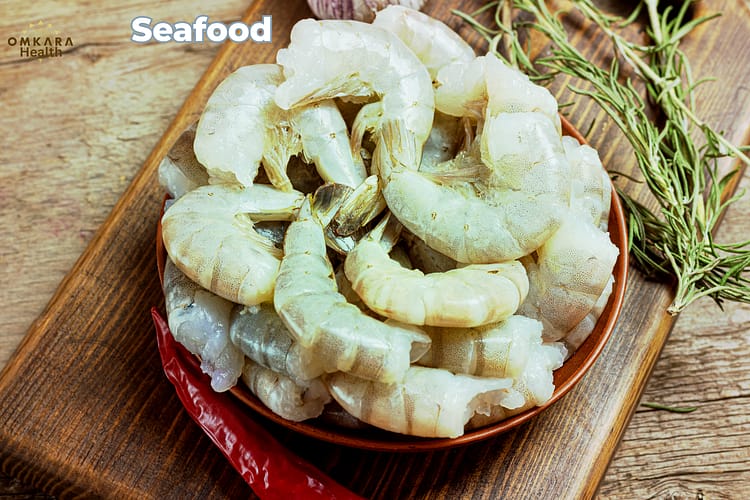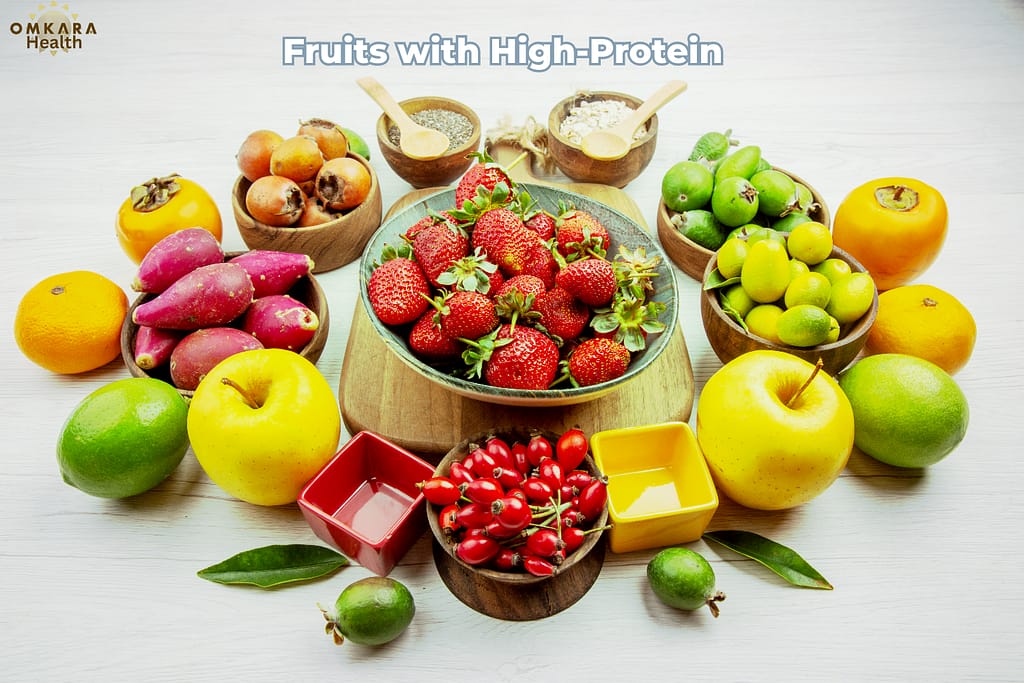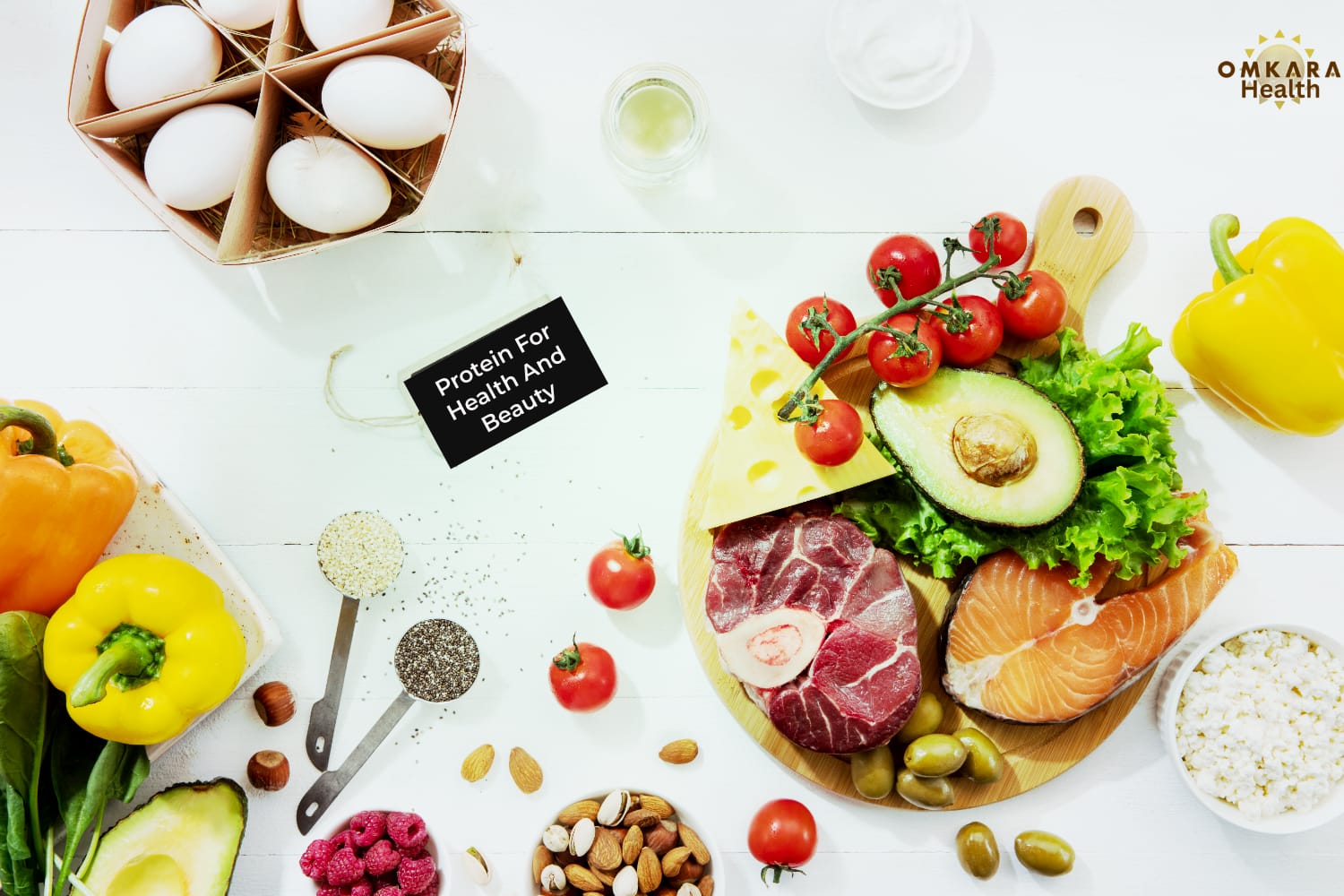Introduction
Protein in your diet gives energy and improves your mood and cognitive function. It’s an important nutrient required for building, maintaining, and repairing tissues, cells, and organs of the body.
While it’s in many different foods that we eat every day, for something so similar it’s often an unknown part of our diets.
When you eat protein-rich foods, it is broken down into the 20 amino acids that are the basic building blocks for growth and energy of the body. The amino acid tryptophan improves mood by producing serotonin, which can decrease symptoms of depression and anxiety and improve overall body function.
Most animal sources of protein-rich foods, such as meat, poultry, fish, eggs, and dairy, provide all the amino acids to body requires, while plant-based protein sources such as grains, beans, vegetables, and nuts often lack one or more of the required amino acids. However, that doesn’t require to eat animal products to get the healthy amino acids. When you eat a variety of plant-based sources of protein every day you can ensure your body gets all the required amino acids.
More Protein Sources for a Healthy Diet
High-Protein Foods for a Healthy Diet
You always need to get 15%-35% of your calories from protein every day. If you eat 15,000 calories in a day, that’s 60-165 grams of protein. Here are some of the best protein resources that can help you to meet your protein requirement.
Seafood :
Seafood is an excellent source of lean protein-rich food and for heart-healthy omega-3 fatty acids. Here is how much protein will get in a serving:
- Salmon see food: 24.5 grams
- Tuna food: 22.5 grams
- Scallops food: 16.5 grams
- Rainbow trout see food: 22 grams
- Shrimp: 22.5 grams
- Tilapia: 24 grams

Meat:
Beef, pork, poultry, lamb, and other kinds of meat are high in protein. Select lean sources low in saturated fat. You can pack in the protein servings of:
- Chicken breast: 22.5 grams
- Ground beef (95% lean): 24 grams of fat
- Pork tenderloin: 20 grams of fat
- Ground lamb: 22 grams of fat
- Ground bison: 22.5 grams
Dairy:
Not only are dairy foods like milk, cheese, and yogurt excellent protein sources, but they’re also the best source of calcium to make your bones strong. Here’s how much protein, you’ll get from the most popular dairy options:
- Skim milk: 7.5 grams per cup of milk
- Low-fat plain yogurt: 7 grams in 5 ounces
- Cottage cheese: 15 grams in 4 ounces
- Parmesan cheese: 9 grams in 1 ounce
Eggs:
Eggs are a good source of high-quality protein that your body can digest and use. One egg has 6 to 9 grams of protein, depending on its size.
Legumes:
Legumes are the best source of plant-based protein. They’re low in fat and high in fiber sources. With one serving you’ll get:
- Lentils: 17 grams per cup
- Peas: 8.9 grams per cup
- Black beans: 15.5 grams per cup
- Chickpeas: 17.5 grams per cup
- Peanuts: 9 grams per ounce
Nuts:
Nuts are high in protein and healthy fats for good health. Because they’re high in calories, with normal serving size is about 1 ounce. Some good options are:
- Almonds: 5 grams
- Pistachios: 7 grams
- Brazil nuts: 5 grams
- Cashews: 5.5 grams
- Walnuts: 5 grams
Soy:
Soybeans are a kind of legume. They’re high in protein and used to prepare many plant-based foods. Here’s how much protein you’ll get in a serving of normal soy foods:
- Tofu: 16 grams per serving (about 1/4 block)
- Edamame: 17.5 grams per cup
- Soymilk: 6 grams per cup
- Tempeh: 16.5 grams per 1/2 cup
Seeds:
Seeds are small with mighty. With 1 ounce you’ll get:
- Flax seeds: 6 grams
- Chia seeds: 6 grams
- Sunflower seeds: 7 grams
- Pumpkin seeds: 7.5 grams
Whole grains:
whole grains with high fiber are a better source of nutrients than refined grains. On Single-cup, you’ll get:
Brown rice: 6.5 grams
Quinoa: 9 grams
Oatmeal: 10 grams
Bulgur: 5 grams
Fruits with High-Protein
Fruits are high in vitamins, minerals, and antioxidants. They also have a small amount of protein. Some of them have the highest amount are:
- Avocado: 6 grams per fruit
- Guava: 1.6 grams per fruit
- Blackberries: 4 grams per cup
- Apricots: 4 grams per cup

Low Protein Sources for Good Health
High-quality meats and seafood are generally expensive. It is a Good protein source, If you’re on a good budget include:
- Peanut butter good for the health
- Edamame protein source
- Eggs improve muscles
- Beans give you strength
- Lentils
- Canned tuna
- Sunflower seeds improve overall body mobility
- Sardines
- Oats improve skin
- Milk makes your body strong
Salmon and Tuna for Protein
Salmon is recognized as a “fatty fish“, it’s also a lean protein and it is a good origin of anti-inflammatory omega-3 fatty acids. A 3-ounce serving of wild salmon gives 141 calories, nearly 18 grams of protein, and 6 grams of fat. Tuna is also a good option for protein, which provides 124 calories, 22 grams of protein, and 5 grams of fat in a 3-ounce serving.
Don’t care which kind of lean protein food you choose, enjoy fish grilled, baked, steamed, and served with tasty veggies or any salad. Sauces are other options to try with this and preparation methods if you’re just getting with fish.
Oysters
Oysters are tasty and nutritious lean protein-rich food. Just 3 ounces gives 79 calories, 9 grams of protein, and 4 grams of fat. These mollusks are a source of zinc, which is an essential nutrient to improve healthy immune system functions.
Celebrate raw oysters as an appetizer or as a protein pairing with a salad or vegetable dish. Squeeze lemon over the oysters and get with vinegar-based mignonette sauce cocktail sauce or horseradish instead of a creamy tartar sauce. The lean protein food is also tasty roasted or grilled if you don’t like raw fish or just want a change.
Shrimp and Lobster as protein food
Shrimp and lobster are both good sources of lean protein foods that are simple to cook. Specifically, a 3-ounce serving of shrimp provides 74 calories and 19 grams of protein. Similarly, the same-sized portion of lobster provides 64 calories, and 15 grams of protein.
Celebrate either seafood grilled, baked, or sautéed with salads, stir-fries, pasta, or with your favorite vegetables. Frozen shrimp is also an easy choice to keep on hand.
Greek and Icelandic Yogurt
Strained yogurts such as Greek and Icelandic are a good source of lean protein for your day. While there is some diversion from one brand to the next, generally speaking, a 5-ounce container of plain, nonfat Greek yogurt will give about 112 calories and 22 grams of protein.
The lean protein food gives a great base for a healthy meal or snack: Include fiber with chia seeds or ground flax, or top your bowl with berries, other high-fiber food that also provides immunity antioxidants.
Tofu and Tempeh
Soy items like tofu and tempeh are simple, vegetarian-friendly ways to add lean protein to your diet. Soy is a plant source of proteins that gives all nine important amino acids and is therefore considered a complete protein.
A 3-ounce serving of firm tofu provides around 72 calories, 7 grams of protein, and less than 5 grams of fat. A similar amount, which is a fermented soy product, provides about 162 calories, 18 grams of protein, and 7 grams of fat.
If you want to add lean protein foods to your meal plan, bake, grill, or stir-fry the plant-based eats and divide them into sandwiches, salads, and bowls. They tend to take on the flavor of anything you cook with them, so try with various seasonings.
Beans, Peas, and Lentils
The most affordable lean protein foods are beans, peas, and lentils, This can be purchased dried or cooked. There are slight variations in micronutrient content, but their nutrient characteristics are similar across the board. As a reference, a half-cup of canned garbanzo beans contains 122 calories, 9 grams of protein, and 4 grams of fat. Similarly. a 1/4 cup of dried lentils provides about 82 calories, 12 grams of protein, and 2 grams of saturated fat.
For carbohydrates, this lean protein food is also good in fiber, so legumes will digest more slowly than other grains. Get them in soups, stews, and salads; add to burgers or meatless meatballs.
Benefits Of Protein Rich Food
- If you practice heavy workouts in the gym, a protein-rich diet is essential to improve muscles and avoid weakness after a workout. Because, muscles are 82% protein, a meal with high protein automatically improves your muscle mass and increases strength.
- It will help you to lose weight. The more protein you eat increase more energy in your body. This can break down proteins and, bam, help to burn more calories.
- Avoiding hunger from destroying your weight loss plan is the best. It should be the priority in your daily lifestyle. Get protein in your meal plan. Eating enough protein is the best way to improve bone health and decrease the risk of bone fractures or osteoporosis later.
- It is essential to take a lot of protein food in your diet to balance your blood sugar levels by improving insulin spikes.
Symptoms of low protein food in daily routine
- Reduction of muscle mass
- Increase in anxiety and mood swings
- Muscle cramps in the body
- Fatigue
- Hair loss increased
- Bloating or fluid retention
- Increase in bone fractures
- Brittle nails
- Low immunity systems
- Increased appetite
- Skin pigmentation in the body


Leave a Reply